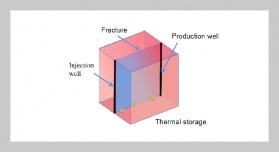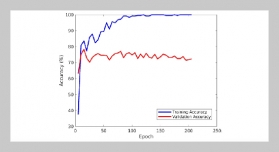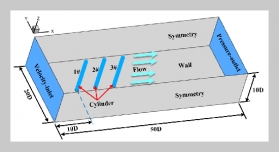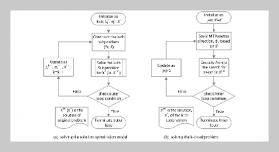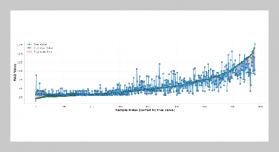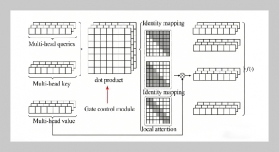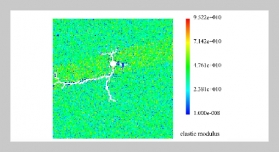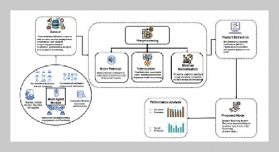- [1] M. S. Fakhri, A. Al-Mukhtar, and I. A. Mahmood, (2022) “Comparative Study of the Mechanical Properties of Spot Welded Joints" Materials Science Forum 1079: 21–28. DOI: 10.4028/p-488xsr.
- [2] A. Al-Mukhtar, (2016) “Review of Resistance Spot Weld�ing Sheets: Processes and Failure Mode" Advanced En�gineering Forum 17: 31–57. DOI: 10.4028/www.scientific.net/AEF.17.31.
- [3] A. Al-Mukhtar, (2019) “Case Studies of Aircraft Fuse�lage Cracking" Advanced Engineering Forum 33: 11– 18. DOI: 10.4028/www.scientific.net/AEF.33.11.
- [4] A. Al-Mukhtar, (2020) “Aircraft Fuselage Cracking and Simulation" Procedia Structural Integrity 28: 124–131. DOI: 10.1016/j.prostr.2020.10.016.
- [5] A. M. Al-Mukhtar and Q. Doos, (2013) “The Spot Weldability of Carbon Steel Sheet" Advances in Materi�als Science and Engineering 2013: 1–6. DOI: 10.1155/2013/146896.
- [6] A. M. Al-Mukhtar, T. Rahman, and Q. M. Doos. “Spot Welding Joint’s Fracture Behavior and Fundamental”. In: Fracture, Fatigue and Wear. 2019, 18–27. DOI: 10.1007/978-981-13-0411-8_2.
- [7] M. Fakhri, A. Al-Mukhtar, and I. Mahmood, (2024) “Effect of Mechanical Deformation on the Electrical Con�ductivity of Resistance Spot Welding Joints" Journal of Applied Science and Engineering (Taiwan) 27(9): 3095–3103. DOI: 10.6180/jase.202409_27(9).0007.
- [8] A. Al-Mukhtar, H. Biermann, S. Henkel, and P. Hüb�ner, (2010) “Comparison of the Stress Intensity Factor of Load-Carrying Cruciform Welded Joints with Different Geometries" Journal of Materials Engineering and Performance 19(6): 802–809. DOI: 10.1007/s11665-009-9552-1.
- [9] T. K. Pal and K. Bhowmick, (2012) “Resistance Spot Welding Characteristics and High Cycle Fatigue Behavior of DP 780 Steel Sheet" Journal of Materials Engineer�ing and Performance 21(2): 280–285. DOI: 10.1007/s11665-011-9850-2.
- [10] J. Ordoñez, R. Ambriz, C. García, G. Plascencia, and D. Jaramillo, (2019) “Overloading effect on the fatigue strength in resistance spot welding joints of a DP980 steel" International Journal of Fatigue 121: 163–171. DOI: 10.1016/j.ijfatigue.2018.12.026.
- [11] H. T. Kang, A. Khosrovaneh, H. Hu, and U. De Souza. “A Fatigue Prediction Method for Spot Welded Joints”. In: 2013, 2013–01–1208. DOI: 10.4271/2013-01-1208.
- [12] P. Banerjee, R. Sarkar, T. Pal, and M. Shome, (2016) “Effect of nugget size and notch geometry on the high cycle fatigue performance of resistance spot welded DP590 steel sheets" Journal of Materials Processing Technology 238: 226–243. DOI: 10.1016/j.jmatprotec.2016.07.023.
- [13] A. M. Almukhtar. Fracture simulation of welded joints. Nova Science Publishers Hauppauge, NY, USA, 2011.
- [14] A. M. Al-Mukhtar, (2013) “Investigation of the Thick�ness Effect on the Fatigue Strength Calculation" Journal of Failure Analysis and Prevention 13(1): 63–71. DOI: 10.1007/s11668-012-9629-2.
- [15] S. Zhang, (1999) “Approximate stress intensity factors and notch stresses for common spot-welded specimens" Welding Journal 78:
- [16] J. Zhang, P. Dong, and Y. Gao. “Evaluation of Stress Intensity Factor-Based Predictive Technique for Fa�tigue Life of Resistance Spot Welds”. In: 2001, 2001– 01–0830. DOI: 10.4271/2001-01-0830.
- [17] D. Wang, S. Lin, and J. Pan, (2005) “Stress intensity factors for spot welds and associated kinked cracks in cup specimens" International Journal of Fatigue 27(5): 581–598. DOI: 10.1016/j.ijfatigue.2004.08.008.
- [18] D.-A. Wang and J. Pan, (2005) “A computational study of local stress intensity factor solutions for kinked cracks near spot welds in lap-shear specimens" International Journal of Solids and Structures 42(24-25): 6277– 6298. DOI: 10.1016/j.ijsolstr.2005.05.036.
- [19] R. I. Stephens and H. O. Fuchs, eds. Metal fatigue in engineering. 2nd ed. New York: Wiley, 2001.
- [20] U. Zerbst, M. Madia, and H. Beier, (2017) “Fatigue strength and life determination of weldments based on fracture mechanics" Procedia Structural Integrity 7: 407–414. DOI: 10.1016/j.prostr.2017.11.106.
- [21] A. M. Al-Mukhtar, (2013) “Consideration of the residual stress distributions in fatigue crack growth calculations for assessing welded steel joints" Fatigue & Fracture of Engineering Materials & Structures 36(12): 1352–1361. DOI: 10.1111/ffe.12060.
- [22] D.-A. Wang, P.-C. Lin, and J. Pan, (2005) “Geomet�ric functions of stress intensity factor solutions for spot welds in lap-shear specimens" International Journal of Solids and Structures 42(24-25): 6299–6318. DOI: 10.1016/j.ijsolstr.2005.05.037.
- [23] Y. Uematsu and K. Tokaji, (2009) “Comparison of fa�tigue behaviour between resistance spot and friction stir spot welded aluminium alloy sheets" Science and Tech�nology of Welding and Joining 14(1): 62–71. DOI: 10.1179/136217108X338908.
- [24] N. Pan and S. D. Sheppard, (2002) “Stress intensity fac�tors in spot welds" Engineering Fracture Mechanics 70(5): 671–684. DOI: https://doi.org/10.1016/S0013-7944(02)00076-0.
- [25] S. Zhang, (1997) “Stress intensities at spot welds" In�ternational Journal of Fracture 88(2): 167–185. DOI: 10.1023/A:1007461430066.
- [26] Y.-G. Kim, B.-J. Jo, J.-S. Kim, and I.-J. Kim, (2017) “A study on dissimilar welding of aluminum alloy and advanced high strength steel by spot welding process" International Journal of Precision Engineering and Manufacturing 18(1): 121–126. DOI: 10.1007/s12541-017-0015-6.
- [27] M. Li, C. Zhang, D. Wang, L. Zhou, D. Wellmann, and Y. Tian, (2019) “Friction Stir Spot Welding of Aluminum and Copper: A Review" Materials 13(1): 156. DOI: 10.3390/ma13010156.
- [28] L. P. Pook, (1975) “Fracture mechanics analysis of the fatigue behaviour of spot welds" International Journal of Fracture 11(1): 173–176. DOI: 10.1007/BF00034726.
- [29] ASTM E8. ASTM E8/E8M standard test methods for tension testing of metallic materials 1. 2010. DOI: 10.1520/E0008.
- [30] T. Wang, T. Zhu, J. Sun, R. Wu, and M. Zhang, (2015) “Influence of rolling directions on microstructure, mechan�ical properties and anisotropy of Mg-5Li-1Al-0.5Y alloy" Journal of Magnesium and Alloys 3(4): 345–351. DOI: 10.1016/j.jma.2015.11.001.
- [31] I. Ay, S. Çelik, and ˙I. Çelik, (2000) “Comparison of properities of friction and diffusion welded joints made be�tween the aluminium and copper bars" Balıkesir Üniver�sitesi Fen Bilimleri Enstitüsü Dergisi 2(1): 88–102.
- [32] P. Kah, C. Vimalraj, J. Martikainen, and R. Suoranta, (2015) “Factors influencing Al-Cu weld properties by in�termetallic compound formation" International Journal of Mechanical and Materials Engineering 10(1): 10. DOI: 10.1186/s40712-015-0037-8.
- [33] A. AMBROZIAK and M. KORZENIOWSKI, (2010) “Using Resistance Spot Welding for Joining Aluminium Elements in Automotive Industry" Archives of Civil and Mechanical Engineering 10(1): 5–13. DOI: 10.1016/S1644-9665(12)60126-5.
- [34] American Welding Society. Welding Handbook. en. London: Macmillan Education UK, 1976. DOI: 10.1007/978-1-349-03073-6.
- [35] H. Gaul, G. Weber, and M. Rethmeier, (2011) “Influ�ence of HAZ cracks on fatigue resistance of resistance spot welded joints made of advanced high strength steels" Sci�ence and Technology of Welding and Joining 16(5): 440–445. DOI: 10.1179/1362171810Y.0000000031.
- [36] L. Chen, Y. Zhang, X. Xue, B. Wang, J. Yang, Z. Zhang, N. Tyrer, and G. C. Barber, (2022) “Investigation on shearing strength of resistance spot-welded joints of dis�similar steel plates with varying welding current and time" Journal of Materials Research and Technol�ogy 16: 1021–1028. DOI: 10.1016/j.jmrt.2021.12.079.
- [37] T. R. Mahmood, Q. M. Doos, and A. Al-Mukhtar, (2018) “Failure Mechanisms and Modeling of Spot Welded Joints in Low Carbon Mild Sheets Steel and High Strength Low Alloy Steel" Procedia Structural Integrity 9: 71–85. DOI: 10.1016/j.prostr.2018.06.013.
- [38] K. M. Daws, M. H. Al-Saadi, and I. K. A. Al-Naimi, (2023) “Investigation Parameters of Resistance Spot Weld�ing For AA1050 Aluminum Alloy Sheets" Journal of Engineering 18(10): 1128–1141. DOI: 10.31026/j.eng.2012.10.04.
- [39] E. A. Fenton. “Recommended practices for resistance welding”. In: 1966.
- [40] U. E¸sme, (2009) “Application of Taguchi Method for the Optimization of Resistance Spot Welding Process" Ara�bian Journal for Science & Engineering (Springer Science & Business Media BV) 34:
- [41] S. M. Manladan, F. Yusof, S. Ramesh, M. Fadzil, Z. Luo, and S. Ao, (2017) “A review on resistance spot welding of aluminum alloys" International Journal of Advanced Manufacturing Technology 90(1-4): 605–634. DOI: 10.1007/s00170-016-9225-9.
- [42] S. K. Hussein and O. S. Barrak, (2015) “Analysis and optimization of resistance spot welding parameter of dis�similar metals mild steel and aluminum using design of experiment method" Engineering and Technology Journal 33(8): 1999–2011.
- [43] Y. Qin, S. Xiao, L. Lu, B. Yang, X. Li, and G. Yang, (2020) “Structural Stress–Fatigue Life Curve Improve�ment of Spot Welding Based on Quasi-Newton Method" Chinese Journal of Mechanical Engineering 33(1): 36. DOI: 10.1186/s10033-020-00453-3.
- [44] S. Kalmykova. “SIMULATION OF T-JOINTS BE�TWEEN RHS STEEL MEMBERS WITH OFFSET IN ABAQUS CAE”. In: 2021.
- [45] H. Abdulsalam, (2021) “Mesh Sensitivity Assessment on 2D and 3D Elastic Finite Element Analysis on a Com�pact Tension Specimen Geometry Using Abaqus/CAE Software" IOP Conference Series: Earth and Environ�mental Science 730(1): 012032. DOI: 10.1088/1755-1315/730/1/012032.
- [46] R. Beckmann, R. Mella, and M. Wenman, (2013) “Mesh and timestep sensitivity of fracture from thermal strains using peridynamics implemented in Abaqus" Computer Methods in Applied Mechanics and En�gineering 263: 71–80. DOI: 10.1016/j.cma.2013.05.001.
- [47] ASM Handbook Committee. Fatigue and Fracture. en. ASM International, 1996. DOI: 10.31399/asm.hb.v19.9781627081931.
- [48] S. Mirsalehi and a. Kokabi, (2010) “Fatigue life estima�tion of spot welds using a crack propagation-based method with consideration of residual stresses effect" Materials Science and Engineering: A 527(23): 6359–6363. DOI: 10.1016/j.msea.2010.06.070.
- [49] A. M. Al-Mukhtar, (2016) “Mixed-Mode Crack Prop�agation in Cruciform Joint using Franc2D" Journal of Failure Analysis and Prevention: 1–7. DOI: 10.1007/s11668-016-0094-1.
- [50] F. Badkoobeh, A. Nouri, H. Hassannejad, and H. Mostaan, (2020) “Microstructure and mechanical prop�erties of resistance spot welded dual-phase steels with vari�ous silicon contents" Materials Science and Engineer�ing: A 790: 139703. DOI: 10.1016/j.msea.2020.139703.
- [51] X.-C. Liu, G.-P. Chen, L. Xu, C. Yu, and Z.-q. Jiang, (2021) “Seismic performance of blind-bolted joints for square steel tube columns under bending-shear" Journal of Constructional Steel Research 176: 106395. DOI: 10.1016/j.jcsr.2020.106395.
- [52] H. Long, Y. Hu, and X. Jin, (2018) “Stress intensity factor solutions and fatigue estimation for dual phase and low-carbon steel spot weld" Theoretical and Applied Fracture Mechanics:
- [53] J. Xu, Y. S. Zhang, L. Xinmin, and G. L. Chen, (2008) “Experimental investigation of fatigue performance of spot welded dual phase sheet steels" Science and Technology of Welding and Joining 13(8): 726–731. DOI: 10.1179/174329307X236841.
- [54] S. Daneshpour, S. Riekehr, M. Koçak, and C. H. J. Gerritsen, (2009) “Mechanical and fatigue behaviour of laser and resistance spot welds in advanced high strength steels" Science and Technology of Welding and Join�ing 14(1): 20–25. DOI: 10.1179/136217108X336298.
- [55] M. Vural, A. Akku¸s, and B. Eryürek, (2006) “Effect of welding nugget diameter on the fatigue strength of the resistance spot welded joints of different steel sheets" Journal of Materials Processing Technology 176(1- 3): 127–132. DOI: 10.1016/j.jmatprotec.2006.02.026.
- [56] M. H. Sar, M. H. Ridha, I. M. Husain, O. S. Barrak, and S. K. Hussein, (2022) “Influence of Welding Param�eters of Resistance Spot Welding on Joining Aluminum with Copper" International Journal of Applied Me�chanics and Engineering 27(2): 217–225. DOI: 10.2478/ijame-2022-0029.
- [57] I. K. Al Naimi, M. H. Al Saadi, K. M. Daws, and N. Bay, (2015) “Influence of surface pretreatment in re�sistance spot welding of aluminum AA1050" Produc�tion & Manufacturing Research 3(1): 185–200. DOI: 10.1080/21693277.2015.1030795.
- [58] I. M. Husain, M. L. Saad, O. S. Barrak, S. K. Hussain, and M. M. Hamzah, (2021) “Shear force analysis of Re�sistance Spot Welding of Similar and Dissimilar Material: copper and carbon steel" IOP Conference Series: Mate�rials Science and Engineering 1105(1): 012055. DOI: 10.1088/1757-899X/1105/1/012055.



